Zermatt protects priceless Matterhorn brand
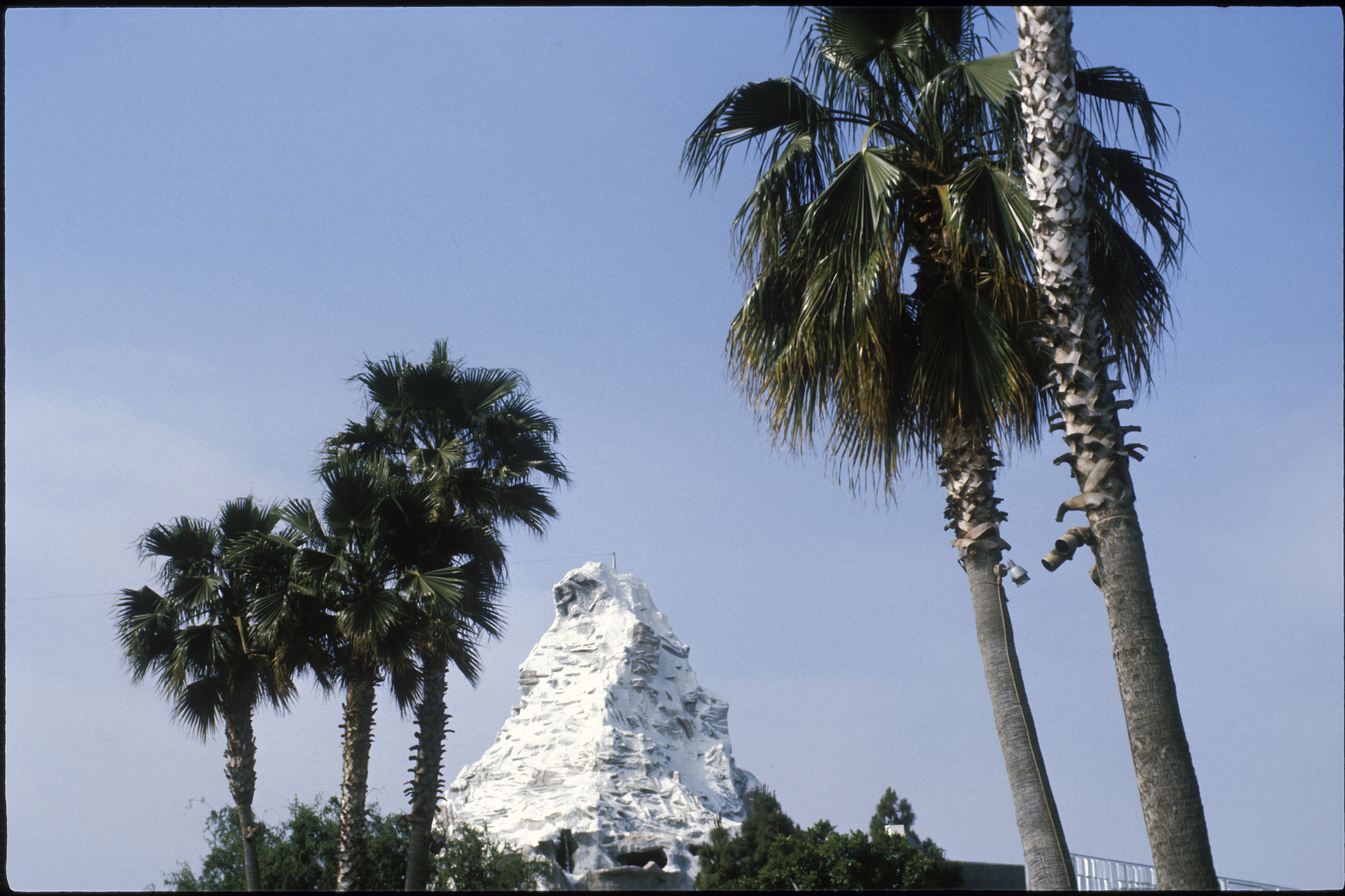
Every year some three million pilgrims travel to Zermatt to pay homage to what is thought to be the most-photographed mountain in the world.
As American adventurer John Harlin reached the flanks of the mythical 4,478-metre Matterhorn as part of his Swiss border adventure, swissinfo.ch takes a look at the mountain’s amazing pulling power and economic significance.
On the edge of the resort, groups of awestruck visitors stare at the pyramid-shaped colossus that rises in the distance above picture-postcard green meadows, and they then snap away frenetically.
“Just one more please… cheese!” cry the group of Dutch pensioners, as another tourist takes what must be their 20th picture in front of the Matterhorn.
The photogenic beauty is shot throughout the day from all angles. If you get up early enough, you may see groups of Japanese tourists who gather at 5am at a popular vantage point in the centre of town to catch the sun rising on the Matterhorn’s eastern flank.
Today the mountain is starting to work its magical powers on one of the visitors.
“It feels completely different when you see it in person,” says Ranak Gandhi, a young American who is touring Switzerland with his family. “It feels so majestic and you just feel like you want to climb it.”
His family laugh as the young man from New Jersey has limited climbing experience. “Maybe he’ll come back,” says his smiling father.
He is likely to be one of millions. The tourist office claim that some 70 per cent of visitors to Zermatt return to see the Matterhorn, trek or ski on the huge ski area that extends into neighbouring Cervinia in Italy.
This pulling power has turned Zermatt into Switzerland’s third-most popular destination for foreign holidaymakers after Zurich and Geneva.
Local fascination
But it is not just foreign visitors who are mesmerised by the Matterhorn.
“I must look at it a minimum of 30 times a day,” says Zermatt’s mayor Christoph Bürgin, who grew up there. “It’s very special as every day it’s a little bit different. This is what makes it so mysterious.”
Daniel Luggen, Zermatt’s tourist director, agrees. “I see it every morning and evening in a different light. Even with clouds it changes its face. It’s like having a different wife every day in front of your door.”
Both men climbed the steep peak when they were younger.
“If you go with a guide it’s not very difficult, but if you go the wrong way you can get into danger due to falling stones,” Bürgin says. “It was a good experience for me but once was enough.”
Climbing the Matterhorn is said to be a rite of passage for local youngsters. Nicolas Burgener, a guide who works at the tourist office, is planning his first climb next year.
“My boss says the Matterhorn is the best employee we have,” he jokes.
Turning point
The Matterhorn has been around for millions of years. The village of Zermatt, meanwhile, was first mentioned in a written document in 1291 but developed rapidly at the end of the 19th century.
Visitors to the Matterhorn Museum in the centre of Zermatt can learn about the very first ascent on July 14, 1865, which cost the lives of four of the seven climbers – three British – and changed the isolated region for ever.
The tragedy hit the headlines around the world and was met with great consternation in Britain. After much thought, Queen Victoria finally decided not to ban the perilous pastime.
The first ascent marked the end of the “Golden Age” of climbing but also the start of Zermatt’s history as a popular tourist destination. In 1891, a train line was opened linking Visp in the Rhone Valley with Zermatt and a link was extended to the 3,100-metre high Gornergrat in 1898.
Until the 1920s most of the visitors to Zermatt were British climbers and wealthy, upper-class tourists.
By the 1950s some 200,000 tourists were visiting Zermatt every year; the resort and mountains now attract three million, spending an average of SFr176 ($220) a day.
Priceless
Today the Matterhorn’s pulling power is priceless.
“Zermatt lives 100 per cent from tourism and tourism depends to a large extent on the Matterhorn,” says Luggen.
“A mountain guide from St Moritz once asked a Zermatt guide what Zermatt would be without the Matterhorn,” says Andreas Biner, president of the Matterhorn Group, which manages 12 hotels, restaurants and shops.
“He replied, ‘something like St Moritz’. The Matterhorn really is the cherry on our cake.”
Big business and market managers have cottoned on to the power of the peak – and not just for tourist souvenirs.
Walt Disney conceived Disneyland’s Matterhorn Bobsleds roller coaster attraction after a visit to Zermatt and products and logos with the distinctive white cap can now be seen on everything from cigarettes to body gel.
“Inhale the adventure,” states the publicity on Old Spice Matterhorn deodorant. “The freshest place on Earth in armpit form.”
Brand protection
The Matterhorn has generally taken over the crossbow on Swiss products as a distinctive sign of quality and Swissness. Protecting this image and the brand has therefore become a full-time occupation for the local authorities and tourist office.
“It’s actually very difficult to protect the Matterhorn as you can’t seek protection for an image – anyone can take a picture. But we were very successful with the name,” says Luggen.
The resort recently registered the Matterhorn name with the Federal Institute of Intellectual Property in Bern and now takes a more proactive approach.
“We tried to stop the Old Spice range but they existed before the protection so we couldn’t do much,” says Luggen.
Every month they receive numerous requests to use the Matterhorn for promotional purposes, whether selling small pieces of rock to attach to postcards or using the peak for guerrilla marketing campaigns. But they are now much stricter and the commune and tourist office have to give permission.
“Around 95 per cent of requests get negative [replies],” says Bürgin. “Twenty years ago it was very different.”
Matterhorn comes from German from the words Matte meaning “meadow” and horn meaning “peak.” Cervino, the Italian name, and Cervin, the French name, derive from the Latin words cervus and -inus meaning “place of Cervus”. Cervus is a genus of deer that includes elk.
The Matterhorn, which stands at 4,478 metres, is on the border of Switzerland and Italy. It is the tenth-highest mountain in Switzerland, and one of 48 Swiss peaks above 4,000 metres; 38 peaks above 4,000m lie in the Mattertal valley around Zermatt.
First ascent: July 14, 1865 by Edward Whymper, Charles Hudson, Lord Francis Douglas, Douglas Robert Hadow, Michel Croz, and Peter Taugwalder via the Hörnli Ridge, the most common route of ascent today. Hudson, Douglas, Hadow and Croz died on the way down.
Some 3,500 people climb the mountain every year – the number can reach 350 a day. Some 500 people have died climbing the mountain.
The first human traces in the valley date back to 8,000BC, settlements were reported in the seventh century and Praborno, the older name for the village of Zermatt, was first mentioned in a document in 1291. It started developing as a tourist resort in the late 19th century after the first ascent.

In compliance with the JTI standards
More: SWI swissinfo.ch certified by the Journalism Trust Initiative

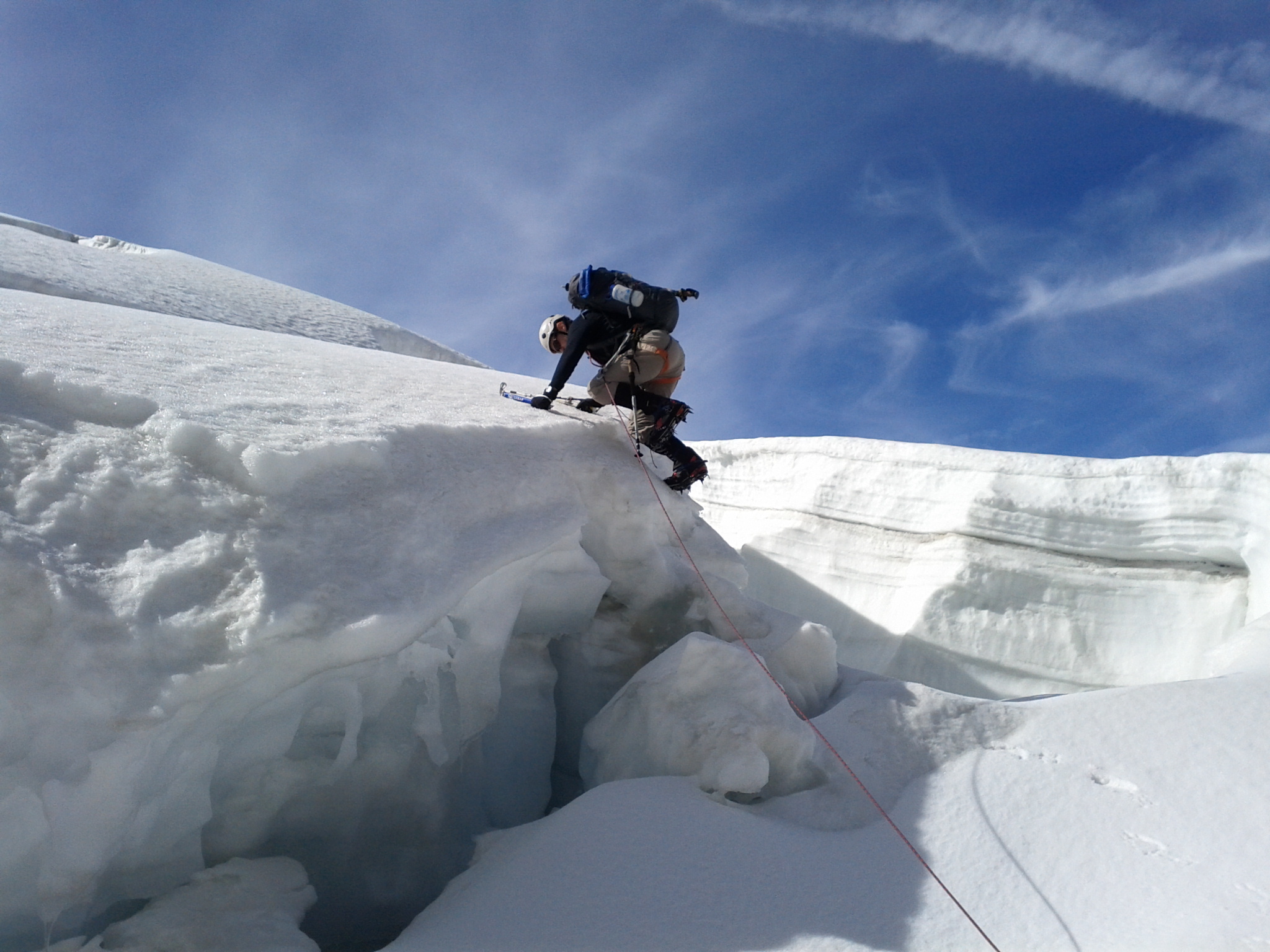
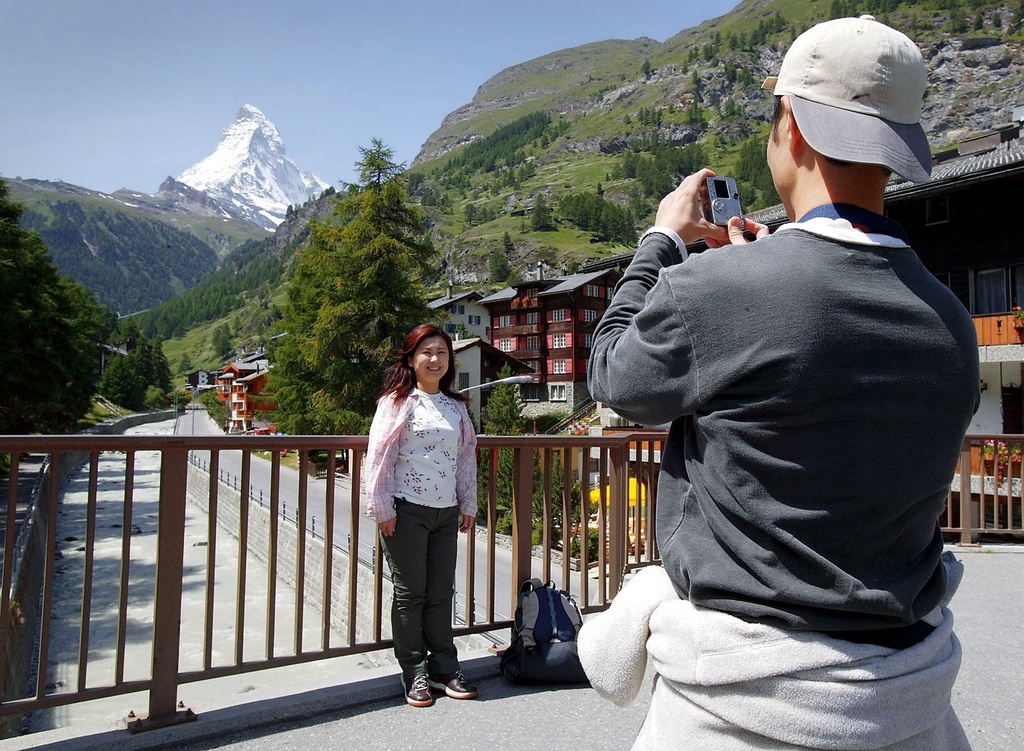
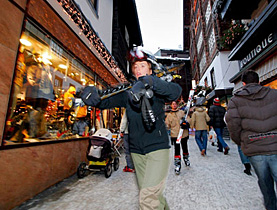
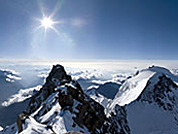
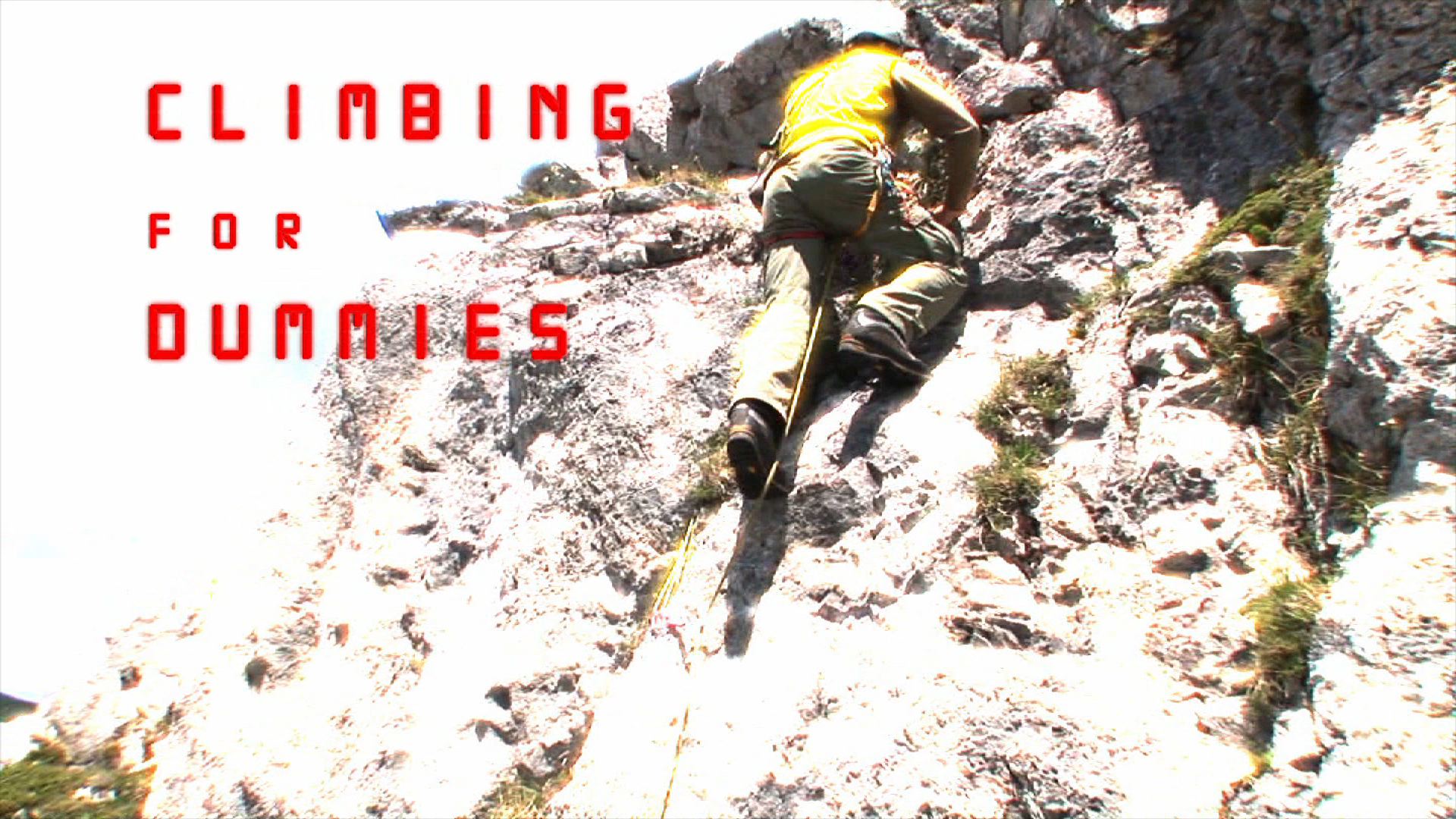
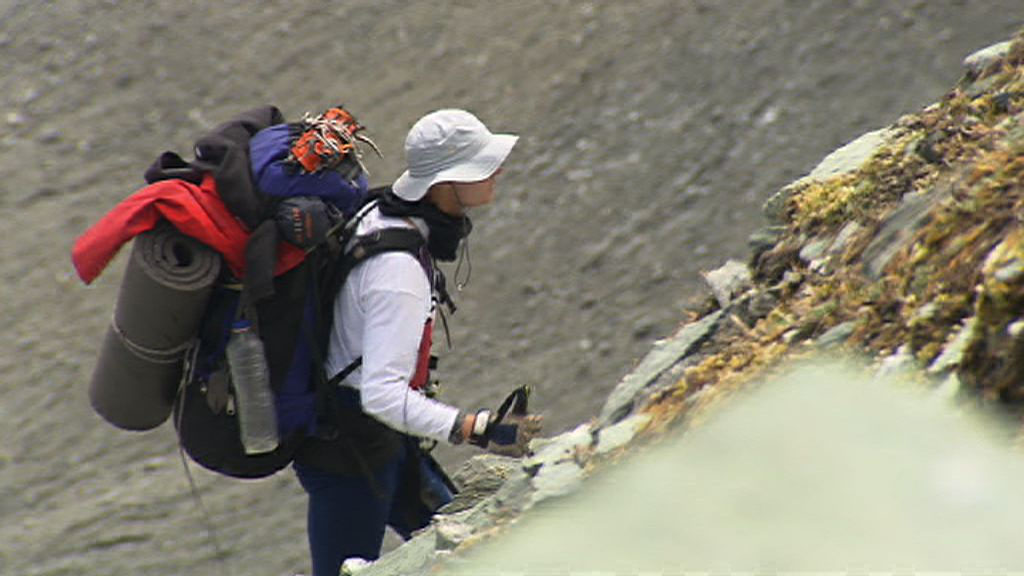
You can find an overview of ongoing debates with our journalists here. Please join us!
If you want to start a conversation about a topic raised in this article or want to report factual errors, email us at english@swissinfo.ch.